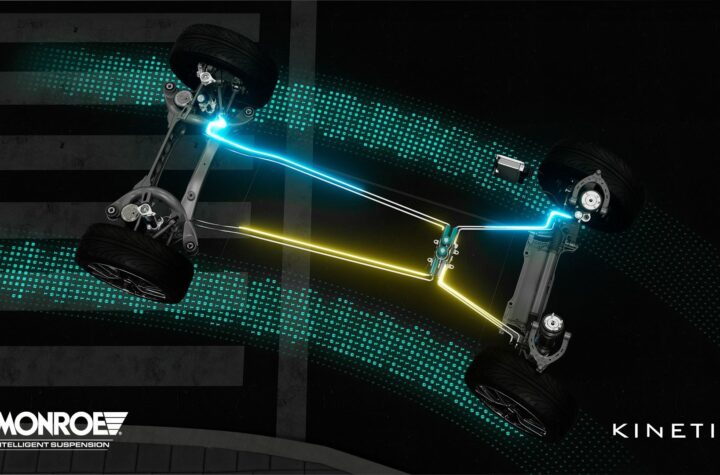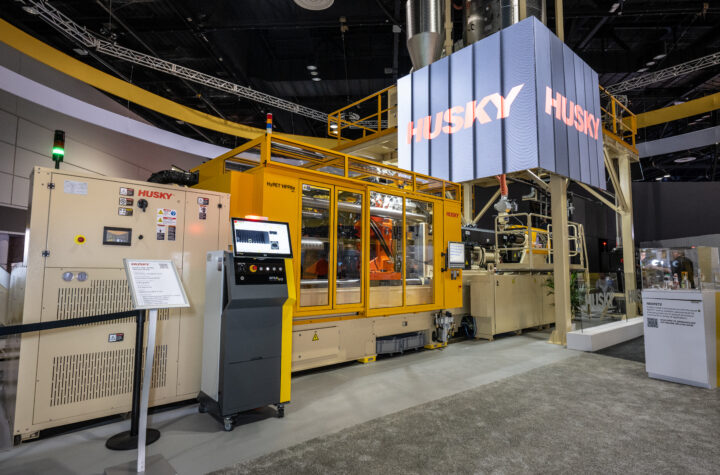The tuner market differs greatly from the low rider scene in its more inherent drive and fascination for enhanced performance. The passion of that market has driven OEMs to alter their thinking and start making trips to SEMA each year. Brand building is a big phenomenon in the performance market and turbos are key to higher performance. They are the quick fix, the low hanging fruit.
 |
| BorgWarner’s regulated 2-stage turbocharger boosts the power of the BMW 535d’s 3.0L I-6 to 272 hp and 413 lb.ft. of torque at 2,000 rpm with a significant 369 lb.ft. of torque available at 1,500 rpm. |
What’s available?
Honeywell/Garrett offers a range of ball bearing turbochargers to the aftermarket that capitalize on the OE quality that has been established in Asia. These turbochargers feature the GT wheel design which was originally developed for high efficiency OE applications. This technology replaces the traditional 20- year-old technology T3/T4 turbochargers that have been the staple diet of performance upgrades kits in the independent aftermarket. Currently, the ball bearing units are the most robust turbos being made. The ball bearing increases the thrust load capacity of the turbo. They also require less oil than traditional product, which enables a lower failure rate especially in installations with inconsistent delivery of air/oil to the turbo.
There are currently no variable geometry turbos available to the independent aftermarket. The critical success factors are different for the OE versus the aftermarket — the knowledge base and capabilities also vary significantly.
While ball bearing turbos are the most robust and variable geometry turbos are largely unavailable at the moment, another Turbo manufacturer, BorgWarner, is developing multi-stage regulated turbo-charging. This innovation includes the regulated two-stage turbocharging R2S and the eBooster concept, in which the turbocharger is assisted by an electrically powered flow compressor. Further optimized combustion processes in spark-ignition engines result in a continuous increase in exhaust temperatures.
“Our long-term plans are to introduce more advanced turbos, however, we will only do this once we feel the market has the technological understanding of the product and how it interfaces with the engine such that we can support,” says Honeywell’s Andrew Nunn.
The aftermarket is very broad and Honeywell reports turbo applications of vehicles as far down in the trough as golf carts being turbocharged, as well as domestic 6.0L plus engines. The Garrett range comprises approximately 10 frame sizes, however the most popular size for the 2.0 to 3.0L engine displacement can be handled with 3-4 frame sizes Not surpsingly, the inline 4-cylinder vehicles appear to be the most preferred upgrade opportunity, with the majority of these being around the 2.0L range.
Turbochargers are very robust with the majority of aftermarket failures being a function of poor air or poor oil mixture. The independent aftermarket provides approximately 15 percent of turbocharger business, according to Honeywell. BorgWarner Turbo Systems also sells a wide range of turbochargers in the engine output range of 20 to 1000 kW. It reports 90 percent of its sales are achieved directly with vehicle manufacturers, the remaining 10 percent are aftermarket sales.
Marketing
Honeywell/Garrett has a number of direct customers who make high volume turbocharger kits that they call Engineering Houses. They will mainly focus on one brand of car and be the specialist in that vehicle marque.
They also have a network of five turbo specialists that concentrate solely on performing technical/engineering support to the performance market — GT Performance Distributors (GTPDs). According to Honeywell/Garrett, the fact that it only has five is a function of the quality rather than the interest. The company reports turning down offers of distribution weekly due to lack of capabilities in the distribution company.
The idea is that when you deal with these GTPDs it is like you are dealing directly with Garrett. These customers are generally engineers and so their business model is geared at Garrett providing the marketing for them.
The company has started attending SEMA and other performance shows and also attended the Sports Compact drag racing events. It launched the Garrett 1/4 mile Sunfire, a 2.0L Ecotec engine producing more than 1,000 hp. Nunn told us that, in the first race, they won the event and smashed the NHRA Hot Rod mph record.
The company has a 70 ft. Hauler emblazoned with Garrett graphics that travels to the country’s races and events. The thrust of its marketing is basically an awareness campaign to show the independent aftermarket that they can have OE technology available in the independent aftermarket and generate demand for its customer base.
Once the customer decides to take the plunge, they begin investigating the types and prices of various turbo kits. The total amount they spend depends on the exact package contents. Most turbo upgrade packages start at $2,000 up to $4,500. However, some specific high performance packages can run as high as $50k. During a recent visit to Lingenfelter (Garrett’s current engineering house), there were 29 Corvettes awaiting package installations varying from $9k to $50k.
The high-end kits tend to be professionally installed and the cheaper ones by do-it-yourselfers. However, this performance upgrade is a hobby for most people so the interest in do-it-yourself is not solely a function of cost.
OEM Effects
The tuner involvement and the growth of this market has clearly attracted the attention of the OEMs. They attend the SEMA show and have made it clear to their dealer network that they want a piece of the performance pie. Equally important, the OEMs are interested in developing a strong following, and developing the brand.
The OEMs cannot move as quickly as the independent companies and although there has been interest, the program development is significantly slower. Honeywell/Garrett says it is currently entertaining many OEM requests and will be moving at their speed in terms of vehicle, to market.
Inter-OEM initiatives like Nissmo, TRD, SVT and new initiatives from Korean companies like Hyundai’s Hard Parts program, which will have dealers selling and installing performance upgrades, points to the fact they are angling to stay actively involved in chasing these dollars down. It’s all happening at maximum boost.














































 Kappa Kappa Kappa
Kappa Kappa Kappa



